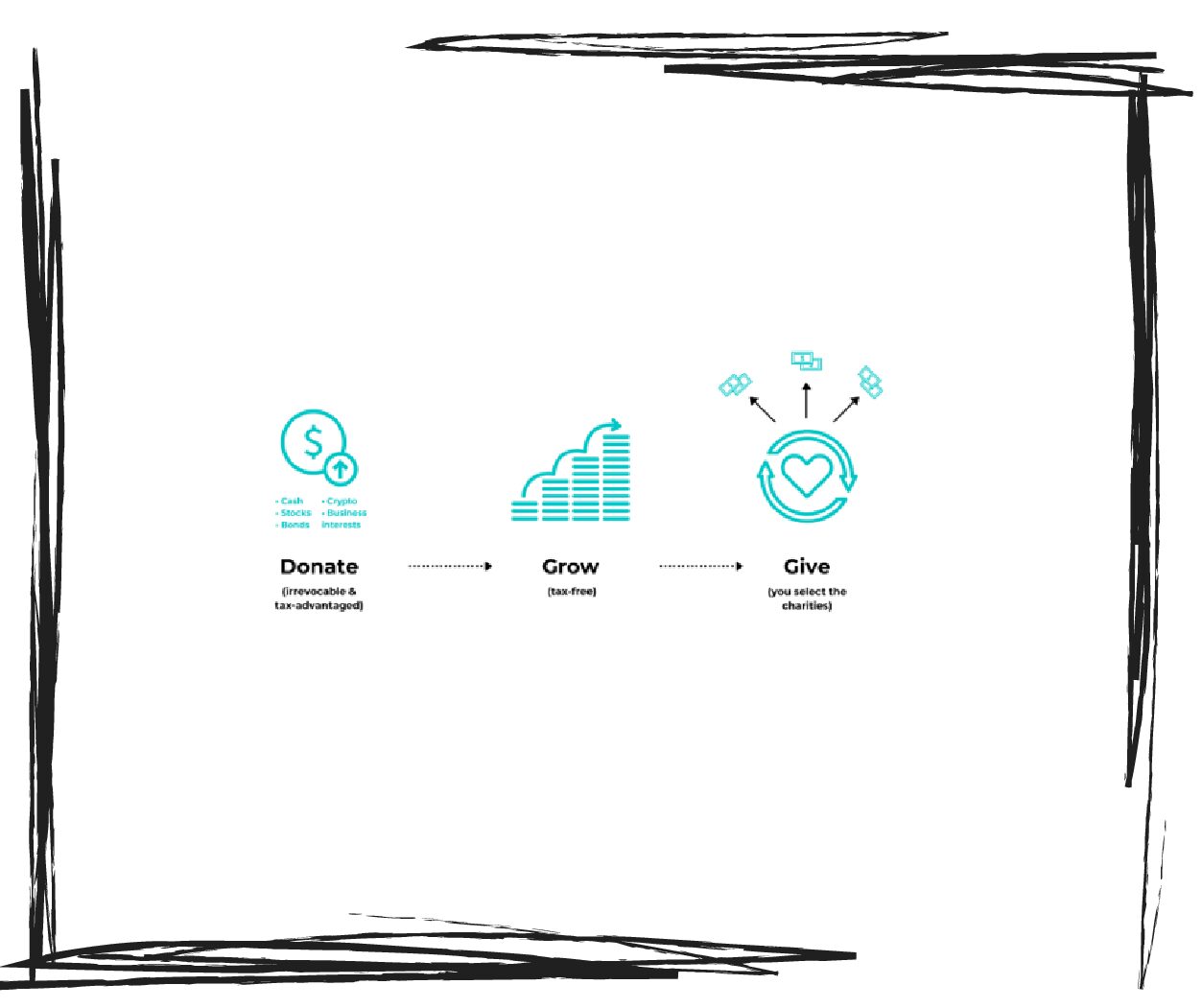Donor Advised funds: Tax Benefits, Growth and Control
Donor advised funds have been around for decades, but they’ve only become popular vehicles for charitable giving over the last several years. They offer immediate tax benefits as the assets or funds in the donor advised fund convey a tax deduction in the year in which they are gifted. Inside the fund, the assets can grow tax-free and not have to be distributed immediately to a charity.
How popular are they? Total assets in donor-advised funds have more than quadrupled over the past decade, to more than $140 billion. Roughly $1 of every $8 given to charity in America now goes to a donor-advised fund.1
The funds offer an extremely flexible way to craft a gifting strategy that can allow for the gift to be invested and managed, to potentially grow over time, and for the gifter to maintain control over the assets.
Understanding Donor Advised Funds
A donor advised fund (DAF) is a savings vehicle that allows for charitable donations and tax benefits, all while the donor still has control over where the assets are to be donated. Donor advised funds are irrevocable, meaning that you can’t withdraw funds after donating. Still, you can specify how the donation is to be invested and to which charity you’d like to donate.
Given their versatility and flexibility, DAFs have become a popular choice for those with a charitable heart. According to research from the National Philanthropic Trust, contributions to DAFs in 2019 totaled almost $39 billion, an 80% increase since 2015.2
With donor advised funds, you aren’t limited to donating just cash. Acceptable donations range from stocks and bonds to bitcoin and private company stock. Donors can deduct up to 60% of adjusted gross income if donating cash and up to 30% of adjusted gross income if donating appreciated assets.3
To make sure a donation qualifies for the full benefits, the fund administrator must be a public charity that falls under the qualifications of a 501(c)(3) organization.
How They’re Managed and How to Contribute to One
First, it must be opened at a qualifying sponsor. After selecting a sponsor, donors must make an irrevocable contribution to the fund. At that time, they can take the immediate tax deduction and begin naming beneficiaries and successors for the account.
After making a contribution, the sponsor firm then has legal control over the funds. It can invest the money in accordance with the donor’s recommendations, until the donor is ready to decide which charity they’d like the distribute funds to. Since the fund manages the money and handles the administrative tasks that come with donating to charities, administrative fees need to be considered when deciding on which sponsor to use, as those fees are deducted from the donor’s contributions.
When Does It Make Sense to Contribute to a Donor Advised Fund?
There are many situations where it may make sense to contribute to a donor advised fund, but some of the most common are:
- If you own highly appreciated assets
- If you’re looking for a tax-deductible transaction
- If you want to make a sizable future donation
For example, let’s say someone bought Amazon stock when it was $10/share, and it grew to $3,000/share and they didn’t want to pay capital gains tax on the appreciation. With a donor advised fund, they could donate the stock, and no capital gains would be due.
The Pros and Cons of Donor Advised Funds
When contributing money to a donor advised fund, the donor receives an immediate tax deduction on the amount they contributed, even though the funds may not be distributed to a charity until a future date. This allows for greater control and flexibility when compared to making a regular donation directly to a charity.
Additionally, contributing to a donor advised fund makes record-keeping simpler than making multiple donations to different charities and keeping track of all the documents. This is because the fund can act as a “hub” for all donations, and it will record all contributions and provide a single tax document containing all information needed.
Though versatile, a concern amongst many donors is the fees associated with donor advised funds. For example, the fund might charge a 1% administrative fee, which is being taken directly out of the funds to be donated. The underlying investments may also have fees, so it’s important that you carefully evaluate where your money is going and how fees play a role in the donation.
The Takeaway
Overall, donor advised funds are a versatile tool when it comes to making donations. They provide tax benefits and allow donors to choose where their money goes, all while those donations can grow tax-free until a charity is chosen. However, there’s more to consider than just the benefits, so to make sure it’s the right move to make for your financial situation, it’s recommended to talk with a financial advisor before establishing a donor advised fund.
-
Frank, Robert. Billionaire philanthropist John Arnold says donor-advised funds are ‘wealth-warehousing vehicles’. CNBC. August 11, 2021.
-
National Philanthropic Trust. The 2020 DAF Report. NPTrust.org
-
What is a Donor Advised Fund? Fidelity Charitable.




